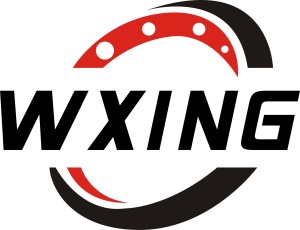PRODUCT
The effect of pre-treatment phosphating
by:Waxing
2020-10-02
Metal surfaces' phosphating.
Phosphating, refers to the metal workpieces treated with the acidic solution of dihydrogen phosphate salt, reaction generated in the surface layer of the stability of the insoluble phosphate coating method, the generated film called phosphating film.
Phosphating film main purpose is to increase the adhesion of coating film, coating corrosion resistance.
There are multiple ways of phosphating, according to the temperature at which the phosphide to points, can be divided into high temperature phosphide (
90 -
98℃)
, medium temperature phosphating (
60 -
75℃)
, low temperature phosphating,
35 -
55℃)
And room temperature phosphating.
Passivation technology of phosphating film is widely used in North America and European countries, the passivation technology is based on the characteristic of the phosphating film itself, the phosphating film is thin, generally in 1 -
4 g/m2, the maximum of no more than 10 g/m2, the free pore area is large, the film itself corrosion resistant force is limited.
Some even born in the process of drying quickly yellow rust, a passivation closed after phosphating treatment, can be exposed in the phosphating film pore metal further oxidation, or generate the passivation layer, the phosphating film can fill, oxidation, phosphating film stable in atmosphere.
In addition to the oil to remove grease on the surface of the workpiece, the oil pollution.
Two categories, including the mechanical method, chemical method.
Machine main method is: manual brush brush, sand blasting, shot blasting, flame burning, etc.
Main: chemical solvent cleaning, acid cleanser, strong alkali cleaning, low alkaline cleaner to clean.
The following chemical method in addition to the grease technology.
Except the grease solvent method, usually with a flammable halogenated hydrocarbon steam method or emulsifying method.
The most common is to use trichloroethane, trichloroethylene, tetrachloroethylene steam in addition to the oil.
Vapor degreasing speed, high efficiency, skim clean thoroughly, to each kind of oil and grease removal effect is very good.
Add a certain amount of emulsion in chlorinated hydrocarbon, soaking or spraying effect is very good.
Because of chlorinated halide has certain toxicity, evaporation temperature is high, moreover due to the emergence of new type low aqueous alkaline cleaner, vapor and in addition to the oil emulsion method is seldom used now.
Acidic cleaner grease removal is a very widely used methods.
It using the surfactant emulsifying, wetting, penetrating principle, and with the aid of acid corrosion of metallic hydrogen mechanical stripping effect, achieve the goal of in addition to the oil.
Acidic cleaner can be used under low temperature and the temperature.
Normally only get rid of the cryogenic liquid oil, medium temperature can remove oil and grease, usually only suitable for soaking treatment.
Acidic cleaner is mainly composed of surfactant (
Such as the OP nonionic surfactant, anionic sodium sulfonate)
, the three most common inorganic acid, corrosion inhibitor.
Because it both has the rust removal with grease double function, people used to call it 'seal' processing fluid.
Hydrochloric acid, sulfuric acid base detergent most widely used, low cost and high efficiency.
But acid residue of Cl -
、SO42-
Does great harm to artifacts after corrosion.
And phosphate acid radical is not in danger of corrosion residues, cost is higher, but the phosphoric acid cleaning efficiency is lower.
For zinc, aluminum generally do not use acidic cleaner, especially zinc corrosion in acid fast.
Custom message































































































